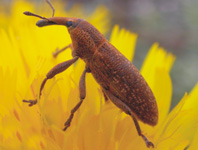Abstract
Three new species of Alburnoides, Alburnoides emineae sp. n., Alburnoides velioglui sp. n., Alburnoides recepi sp. n., are described from the Euphrates River drainages (Persian Gulf basin) in eastern Anatolia, Turkey. Alburnoides emineae, from Beyazsu Stream (south-eastern Euphrates River drainage), is distinguished from all species of Alburnoides in Turkey and adjacent regions by a combination of the following characters (none unique to the species): a well developed ventral keel between pelvic and anal fins, commonly scaleless or very rarely 1–2 scales covering the anterior portion of the keel; a deep body (depth at dorsal-fin origin 31–36% SL); 37–43 + 1–2 lateral-line scales, 13½–15½ branched anal-fin rays; number of total vertebrae 41–42, modally 41, comprising 20–21 abdominal and 20–21 caudal vertebrae. Alburnoides velioglui, from Sırlı, Karasu, Divriği and Sultansuyu streams (northern and northeastern Euphrates River drainages), is distinguished by a poorly developed ventral keel, completely scaled; a moderately deep body (depth at dorsal-fin origin 24–29% SL); 45–53 + 1–2 lateral-line scales, 11½ –13½ branched anal-fin rays; number of total vertebrae 41–42, modally 42, comprising 20–22 abdominal and 20–21 caudal vertebrae. Alburnoides recepi, from Merzimen Stream (southern Euphrates River drainage), is distinguished by a well developed ventral keel, completely scaleless; a deep body (depth at dorsal-fin origin 29–34% SL); 47–56 + 2–3 lateral-line scales; 13½–16½ branched anal-fin rays; number of total vertebrae 38–40, comprising 19–21 abdominal and 18–20 caudal vertebrae.

